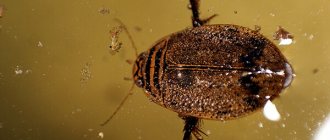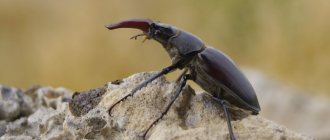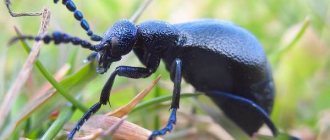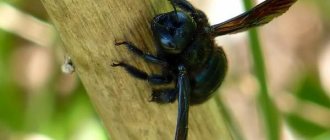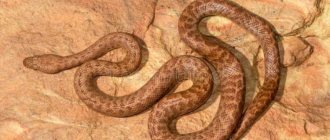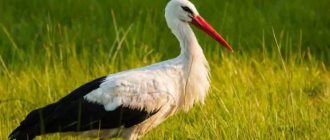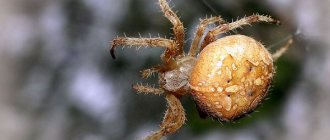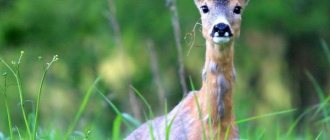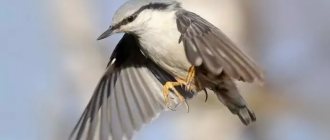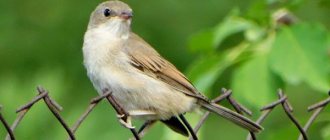- Wild animals
- >>
- Insects
Apollo is an incredibly beautiful and unique butterfly. In general, in terms of its external characteristics, it is no different from other species of the order Lepidoptera. The insect differs only in its unique color. In general, butterflies are very unusual animals. Many children love to catch them for fun, but it should be remembered that this can become a threat to her life. A person can easily accidentally damage an insect’s wings, which will subsequently lead to the inability to fly.
In this article:
|
Origin of the species and description
Photo: Apollo
Apollo itself is a very unusual name for a butterfly. It is not difficult to guess that the specific name was given to her in honor of the Greek god, who was the son of Zeus and Leto, the brother of Artemis and personified beauty with light.
As noted earlier, Apollo is not very different from lepidoptera in its size. The front wing has an average length of 37 to 40 millimeters. The span of both wings is usually between 75 and 80 millimeters. An adult caterpillar can reach a size of 5 centimeters before the cocoon stage.
Interesting fact: the male is smaller in size than the female. The female individual reaches from 83 to 86 millimeters
This species is almost the most recognizable among butterflies in all of Europe. It is the largest Parnassius of its kind.
Appearance and features
Photo: Apollo
Apollo is a butterfly with an unusual appearance and its own characteristics. The insect's wings are predominantly white. Sometimes they take on a soft creamy tint. Along the edges of the wings on the outer side you can see a wide stripe, on which there are white spots, which merge into a narrow stripe closer to the body. The number of these same spots is no more than 10, unless Apollo has any deviations. 5 of them are black, which are located on the upper wings, and 5 more red appear on the lower wings, which in turn have a rounded shape.
The Apollo has a black club on its antennae, which is not a rare occurrence for butterflies in general. The insect has smooth large eyes with small tubercles on which small bristles grow. Apollo's chest and abdomen are also covered with small silvery hairs. This species has pronounced sexual dimorphism. Females look much brighter and more impressive when compared with males. Insects that have recently left their pupa have a yellowish color on their wings.
During the caterpillar stage, Apollo is black with a number of white spots. Tufts of black hairs are also located throughout the body. In the adult stage, she develops blue warts and two red-orange spots.
Variability
The species is characterized by strong geographic and population variability. The distribution of wing spots varies in many habitats of the species, and its weak migratory ability and widely separated populations contribute to the consolidation and maintenance of population differences. As a result, more than 600 forms of this species have already been described. The intraspecific taxonomy of Apollo is controversial among entomologists and comes down to two approaches:
- the first is to give each major population the status of a subspecies;
- the second is the complete denial of subspecies by reducing them to infrasubspecific forms.
6.1. Subspecies
democratus lives in the European part of Russia and the Middle Urals
(Krulikowsky, 1906).
In the forest-steppe of Western Siberia, you can find representatives of the subspecies meinhardi
(Sheljuzhko, 1924) - very large, with large black and red spots on the milky white background of the wings in males, and in a coating of black scales - in females.
carpathicus
occurs in the Carpathians (Rebel et Rogenhofer, 1892).
In the foothills of the Middle and Southern Urals - limicola
(Stichel, 1906), individuals of which are also very large, and the wings of females have a yellowish tint.
ciscaucasicus
(Sheljuzhko, 1924)
is widespread in the Greater Caucasus The subspecies breitfussi
(Bryk, 1914) is known from several specimens from
Crimea
.
In Altai, the subspecies alpherakyi
(Krulikowsky, 1906) is distinguished.
In the Sayan Mountains and Cisbaikalia, the subspecies sibiricus
(Nordmann, 1851) is found, and in the eastern part of Siberia, the Baikal region and Mongolia -
hesebolus
(Nordmann, 1851), with snow-white wings with small black and red spots.
merzbacheri
lives in Kyrgyzstan .
Several subspecies of Apollo have been identified in the Pyrenees and the Alps.
Where does Apollo live?
Photo: Apollo
This unique butterfly can be found on the plains of Europe. As its habitat, it often chooses edges and large clearings in forest types such as pine, pine-oak and deciduous. These places should warm up well, since for Apollo the sun's rays are a very important aspect in his life. In Europe, this species can also be found in Russia.
Despite his love for forest edges and clearings, Apollo prefers to settle in the mountains. There the butterfly can be found in pine forests located near mountain rivers and streams. Sometimes this species can reach loaches. From time to time, Apollo can be found in subalpine meadows and flowering mountain slopes, but at an altitude of no more than 2500 meters above sea level.
If we talk about the countries where this species lives, it is necessary first of all to note the most densely populated geographical areas:
- Norway
- Sweden
- Finland
- France
- Ukraine and others
On the territory of Russia, Apollo can be found in Smolensk, Moscow, Yaroslavl and several other regions.
Interesting Facts
- The butterfly got its name in honor of the Greek sun god Apollo. The beauty of the wings inspired biologists so much that they christened the insect with such a majestic name.
- Surprisingly, this species has poor flight abilities. When danger approaches, she tries to fly away as quickly as possible. However, this is not always possible. In this case, Apollo spreads his wings and begins to rub his paws against them. A hissing sound is created that scares predators.
- The Apollo butterfly prefers mountainous areas, which is not typical for insects. This species is well adapted to low temperatures. In addition, the insect can be found at high altitudes. For example, high-mountain species live in the Himalayas and feel great at an altitude of 6 km from sea level.
- The Arctic Apollo subspecies lives near an area where the snow never melts. For such a fragile insect this is a real miracle.
admiral butterfly - description, habitat, species
What does Apollo eat?
Photo: Apollo
The diet of a butterfly such as the Apollo is not very different from other representatives of similar winged insects. Their main diet is pollen, which they collect from various flowers while flying. Apollo prefers asteraceous plants, that is, thistle, ragwort, cornflower, cornflower, oregano, nogolovatia and a variety of types of clover. In search of food, this species is able to fly a very long distance, specifically about 5 kilometers per day.
Like all butterflies, the Apollo feeds thanks to its spiral-shaped proboscis, which can penetrate deep into the core of the plant. With its help, insects can easily get nectar from the flower they like. During the break between meals, the spiral-shaped proboscis is in a curled state.
This species at the caterpillar stage is particularly voracious. After hatching from the egg, the animal begins to search for food. The caterpillar eats absolutely all the leaves of the plant it likes, and then immediately moves to a new one.
Notes
- ↑ Day butterflies (Hesperioidea and Papilionoidea, Lepidoptera) of Eastern Europe. CD identifier, database and Lysandra software package. I. G. Plyushch, D. V. Morgun, K. E. Dovgailo, N. I. Rubin, I. A. Solodovnikov. Minsk, 2005
- K. Lampert
Atlas of butterflies and caterpillars. - Minsk: Harvest, 2003. - 735 p. — 5000 copies. — ISBN 985-13-1664-4 - Reichholf-Rim H. Butterflies. M.: Astrel, 2002
- Animal life according to A.E. Brem. T.2: Arthropods. M.: Uchpedgiz RSFSR, 1941
- Korshunov, 2002.
- Pekarsky, P.: 1953, Parnassius apollo L. in den Karpaten. Zeitschrift der Wiener Entomologisches Gesellschaft,
| common Apollo species in Russia is on the verge of extinction and is listed in the Red Book of Russia |
Features of character and lifestyle
Photo: Apollo
Apollo 's lifestyle is almost no different from other representatives of butterflies. The main peak of its activity occurs during the daytime. In the evening it descends into the grass to spend the night and hide from possible enemies.
During the day, butterflies fly slowly, covering short distances from object to object. When we use the word object, we of course mean various flowering plants.
Females spend most of their lives in the grass. If they sense approaching danger, they can take off sharply and fly without stopping for a distance of up to 100 meters. If a butterfly is surprised by natural enemies during its sleep, it quickly turns over on its back and opens its wings, showing its red spots, thereby trying to scare away predators. She can also scrape her legs along the underside of her wings. This helps her create a hissing sound that is almost inaudible to humans.
Social structure and reproduction
Photo: Apollo
The Apollo breeding season occurs in the summer season. Females are ready to mate immediately after emerging from the pupae, and males on the 2-3rd day. The male forms a sfargis with his reproductive apparatus on the female after mating - a chitinous appendage that does not allow her to mate with anyone else. Next, the female lays up to hundreds of white, round, 1.5 mm in diameter eggs, one at a time or in groups on or near different parts of the plant. From them hatch black caterpillars with tufts of long hair, colored with orange spots on the sides. They also have steel-blue warts on each segment and a reddish osmeterium, from which a repulsive odor is sprayed when threatened.
On clear days, adult caterpillars actively feed on the leaves of various types of sedum - this is their food plant. Depending on the terrain, the caterpillars can also feed on spiny grass. They do not stop eating until their outer shell becomes very dense and tight, then a molt occurs, repeating 5 times before the next stage.
The caterpillar often chews through the sedum, it falls to the ground and is completely eaten on the ground. This is where pupation occurs. This stage lasts about two weeks. The pupa reaches 18-24 mm in length and is at first light brown with translucent integuments and dark brown spiracles, and the very next day it darkens and becomes covered with a blue-powdery coating. This stage of immobility. After all this difficult journey, a beautiful Apollo butterfly is born from the pupa.
Area
Europe (except England), the Caucasus and Transcaucasia, Turkey, Lebanon, Syria, Iraq, Iran, Afghanistan, Central Asia, the Middle and Southern Urals, Southern Altai.
Distributed throughout most of Eastern Europe, reaching forest-steppes in the south. In the north of the region it reaches the northern regions of the Arkhangelsk region of Russia, as well as the center of the Komi Republic and the Northern Urals. A detailed description of the northern boundary of the range of this species with a complete list of all northern localities was recently published (Bolotov et al., 2013). It is shown that the northern border of Mnemosyne's range is determined by the distribution of the caterpillars' main food plant - corydalis (dense corydalis and hollow corydalis).
Found in all Baltic states and Belarus. In Poland, the species is very local in the northeast of the country, but further south in the mountains and foothills it is more common (Sudetes, Beskids, Bieszczady, Świętokrzyskie Mountains). Distributed in the valleys of Slovakia and Hungary. Widely distributed in the highlands of Romania, the foothills and mountains of the Eastern and Southern Carpathians.
From Northern Moldova and Western Ukraine, the species' range does not enter the steppes and extends east along the black soil strip of Russia to the Caspian region and the Southern Urals (the easternmost populations are known from the Chelyabinsk region).
To the south of the Don region it is distributed to the mountains of the Main Caucasus Range. In the Caucasus it is found from the vicinity of Krasnaya Polyana to the subalpine meadow belt of Dagestan.
Absent in most regions of the steppe Ciscaucasia and partly in the Black Earth Region.
In the plains it occurs in isolated populations.
Natural enemies of Apollo
Photo: Apollo
Apollo, like other butterflies, has many natural enemies. Representatives of fauna such as birds, wasps, mantises, frogs and dragonflies are considered especially dangerous for them. From time to time, this butterfly is also not averse to feasting on several species of spiders, lizards, hedgehogs and rodents. The main part of these same enemies can take Apollo by surprise at night while he is resting or during the day, when the insect is perched on a flowering plant.
Of course, we cannot forget about such an enemy as man. As we noted earlier, young children catch butterflies for fun. This can directly disrupt their livelihoods. Even after a person has released an insect from his net, it may simply not take off, as damage to vital organs could occur.
Population and species status
Photo: Apollo
The Apollo butterfly population is going through hard times. This species is very vulnerable. Its numbers are declining catastrophically quickly every year. Previously, these beautiful lepidopteran insects lived in many European countries, but at the moment they are no longer found anywhere.
Now the majority of populations can be found in Eastern Fennoxandia. Unfortunately, at the moment the species is on the verge of extinction and has become very rare in those places where previously this beautiful butterfly could be found without much difficulty. The reason for this situation was frequent trampling, burning, plowing near populated areas, where the Apollo butterfly usually lives and reproduces. They are almost not inclined to migrate, so they died, having almost no chance of preserving the species living in the territory that was destroyed. Therefore, the more you disturb and interfere with the butterfly’s habitat, the more their numbers decrease.
It is necessary to take measures to help prevent such a sharp decline in the number of the Apollo butterfly. We’ll talk about security measures in the next section.
Factors limiting numbers
File:Apollo WW 37 B8698.jpg Entomological collection of Apollo
Destruction of natural habitats of the species - trampling and burning in the vicinity of populated areas, plowing of forest edges, afforestation of clearings and wastelands. The species has a weak ability to migrate, and its disappearance in a particular area is often irreversible. Some scientists also call global warming one of the factors for the extinction of the species in the lowland areas of Europe. The strong winter thaws observed in recent years lead to the release of wintering caterpillars from their egg shells, which leads to their weakening and death (personal communications from entomologists Sergei Mozgovoy, Voronezh region, Yuri Berezhny, Lipetsk and others).
